Backblaze, a cloud-storage provider that uses consumer-class hard disk drives and extensive replication mechanisms to store data for its customer, has published yet another HDD reliability report. Just like the previous issue, Backblaze found that that desktop hard drives from HGST, a division of Western Digital Corp., are generally more reliable than products carrying Seagate and Western Digital brands.
In general, the findings of Backblaze are similar to those from the previous report that was issued in September, 2014. Consumer-grade 3.5” 2TB, 3TB and 4TB hard disk drives produced by HGST (formerly Hitachi Global Storage Technologies) have the annual failure rate of around 1 per cent or below. Western Digital’s 1TB and 3TB desktop HDDs sport the annual failure rate of 3 to 3.5 per cent. By contrast, consumer-class 1.5TB, 3TB and 4TB drives from Seagate have abnormally high failure rates, which are around 14 per cent for select models.

Since Backblaze uses desktop HDDs in datacentre environment, which means that its usage model is vastly different from the one suggested by hard drive makers, failure rates demonstrated by the HDDs are naturally higher than failure rates demonstrated by similar drives in normal cases. In the cloud datacentre environment the hard drives not only work for 24 hours non-stop, but are also subjected to vibrations, voltage spikes and surges, heat as well as other undesirable effects, which greatly damages their reliability.
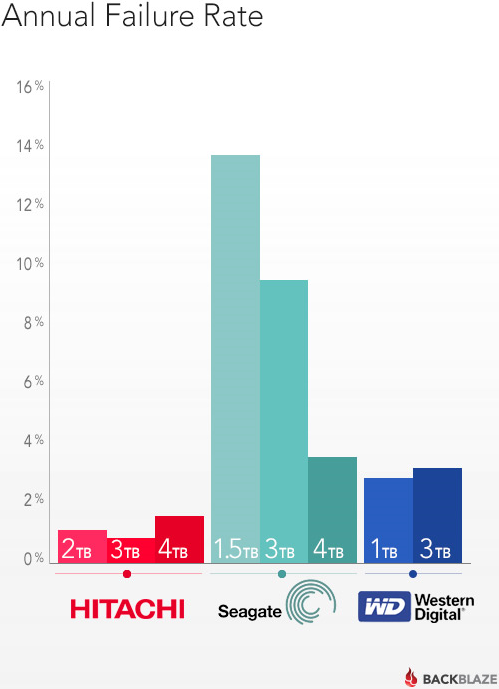
According to Backblaze, there are many hard drives – such as Western Digital Green 3TB drives and Seagate LP (low power) 2TB HDDs – that are completely not suitable for its usage scenario. The company believes that the drives are designed to be energy-efficient, and therefore reduce their spindle speeds aggressively when not in use. In the Backblaze environment, they spin down frequently, and then spin right back up, which might cause a lot of wear on the drive. Besides, the HDDs cannot survive for long in vibrating environments.
Perhaps, the most alarming thing revealed by Backblaze is abnormally high failure rates of Seagate hard drives in general. It should be kept in mind, though, that the cloud service provider uses select models from Seagate and that its data only covers limited number of HDD models in general.
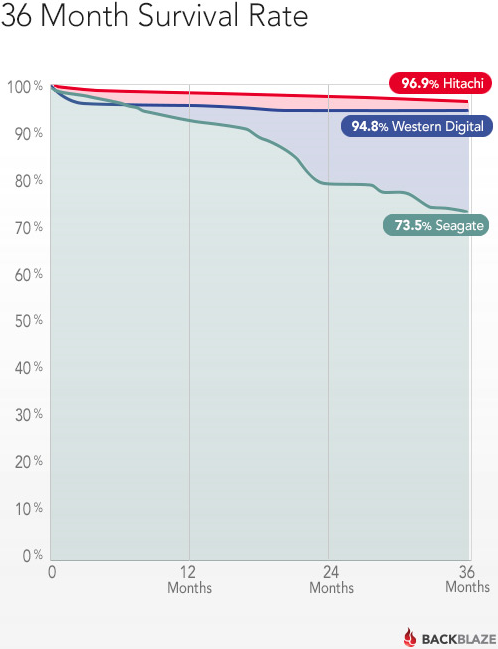
While it should be noted that the HDDs are not designed for Backblaze environments, so are the drives from HGST. Moreover, even the cloud service provider notes that a number of its Seagate’s hard drives were obtained as warranty replacements for the older drives, which means that they were reconditioned. Backblaze claims that such HDDs fail more often than new hard drives (which is logical). Seagate itself said in a special statement that it stands behind the quality of its products and that the drives Backblaze uses were not designed for particular usage model.
“As with previous data reported by Backblaze, desktop-class drives and some external drives were purchased and used in enterprise-class workloads – which they were not designed for nor tested to support,” a statement by Seagate reads.
Back in September, an HDD expert told KitGuru that HGST’s hard drives have lower failure rate compared to competing products because testing procedures at HGST are more extensive than those at other manufacturers. Before any HDD product goes to the market, all makers test every component of it for reliability. Only HGST extensively tests all of its consumer hard drives before shipping them, which significantly lengthens its manufacturing process and limits HGST’s production volumes, but also ensures maximum reliability of its HDDs and lowers their failure rate. By contrast, other HDD manufacturers rely on various built-in self-test capabilities of their hard drives.
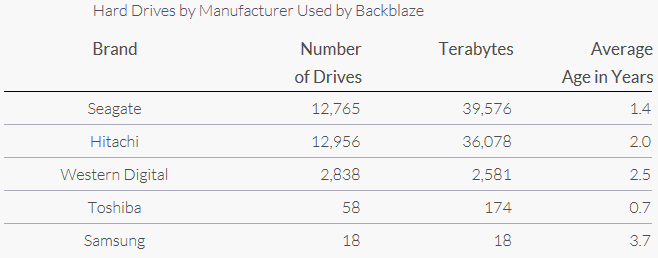
Backblaze has 34881 hard disk drives and stores over 100 petabytes of data in its datacentre. The company uses only consumer-class HDDs to lower its costs and replicates data constantly. It uses select models from three manufacturers and does its best to limit the amount of SKUs that are in use. If certain drives need to be replaced too often, it greatly increases Backblaze’s total cost of ownership (TCO) since replacements require a lot of work.
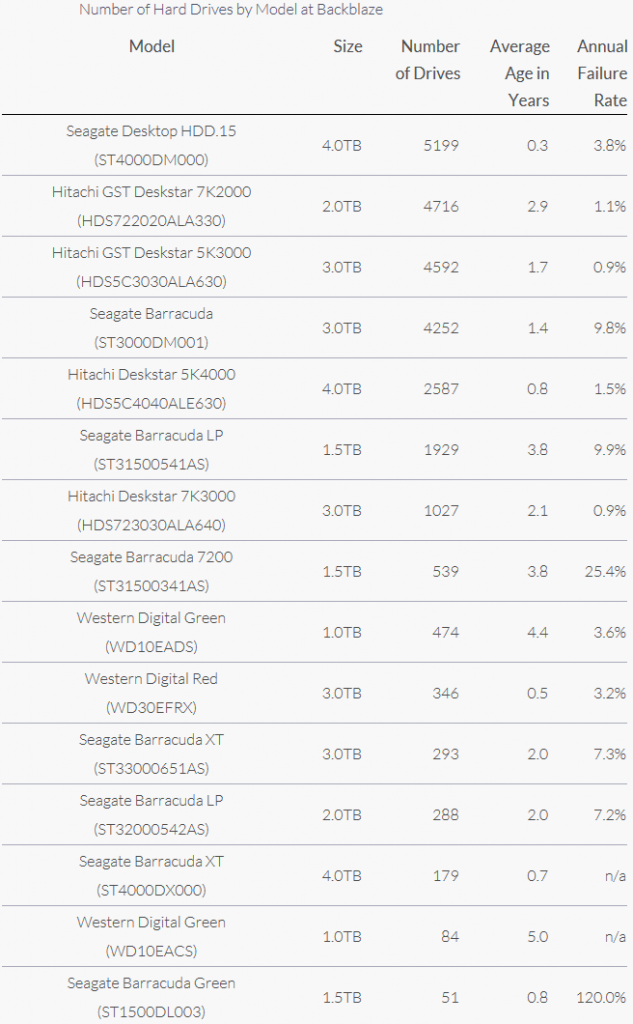
Discuss on our Facebook page, HERE.
KitGuru Says: While it is obvious that using desktop-class HDDs in a cloud datacentre environment is clearly not a good idea, the data from Blackblaze is definitely a food for thought.
 KitGuru KitGuru.net – Tech News | Hardware News | Hardware Reviews | IOS | Mobile | Gaming | Graphics Cards
KitGuru KitGuru.net – Tech News | Hardware News | Hardware Reviews | IOS | Mobile | Gaming | Graphics Cards


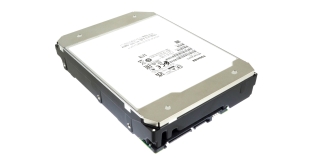
Hitachi master race!
WD uses Hitachi HDD on their 4 TB my book HDD